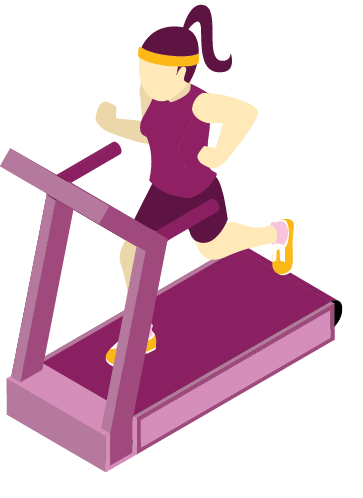Staying Active During COVID-19
Waters College of Health Professions

Prolonged physical inactivity has a potent effect on the mind and body. It can shorten the lifespan, reduce the quality of life, increase health care costs and reduce the age of chronic disease onset (Booth et al., 2020). This is of concern because pre-existing chronic disease seems to worsen the effect of COVID-19 (CDC, 2020). Preliminary evidence also suggests activity is down (Fitbit, 2020).
We intuitively know that exercise is beneficial. But, how does it work? Simply stated, the alteration between exercise (i.e. designed stress) and recovery (i.e. sleep, nutrition) leads to an enhanced and resilient state. However, concern grows when we try to do too much — too soon. Often, a proverbial “flip of the switch” results in exercise of unaccustomed intensity or duration. Sweat rate, exhaustion or soreness are not good indicators. Rather, long-term adherence should
be prioritized.
Masks may limit exercise performance. Evidence from medical grade masks (i.e. FFP2/N95) showed a reduction in peak capacity (Fikenzer et al., 2020). Nonetheless, masks are worn to reduce airborne droplets and thus, the transmission of the virus. That means exercise tolerance will most likely be lowered. It may not be the time for personal records.
If you’re returning to physical activity during COVID-19, please gradually return to exercise in a slow and stepwise manner (Metzl et al., 2020).
If you’re exercising for the first time, complete a PAR-Q+ (physical activity readiness questionnaire for everyone) to identify any limitations that may affect your ability to exercise. You can complete one here: GeorgiaSouthern.edu/parq
If you were diagnosed (or suspected) with COVID-19, consult your health care provider prior to the resumption of exercise. This is extremely important for those with preexisting heart or lung conditions. Exercise should not resume if you have ongoing symptoms (Metzl et al., 2020). If otherwise healthy, exercise should not occur until you are 7-day asymptomatic (Metzl et al., 2020). If you develop symptoms (i.e. chest pain, fever, heart palpitations, shortness of breath) during exercise, contact your health care provider.
Collectively, start small and maintain that standard before progressing. See the American College of Sports Medicine guidelines for further information. References are available upon request.
— Nick J. Siekirk, Ph.D., M.S., CSCS, Assistant Professor, Department of Health Sciences and Kinesiology
